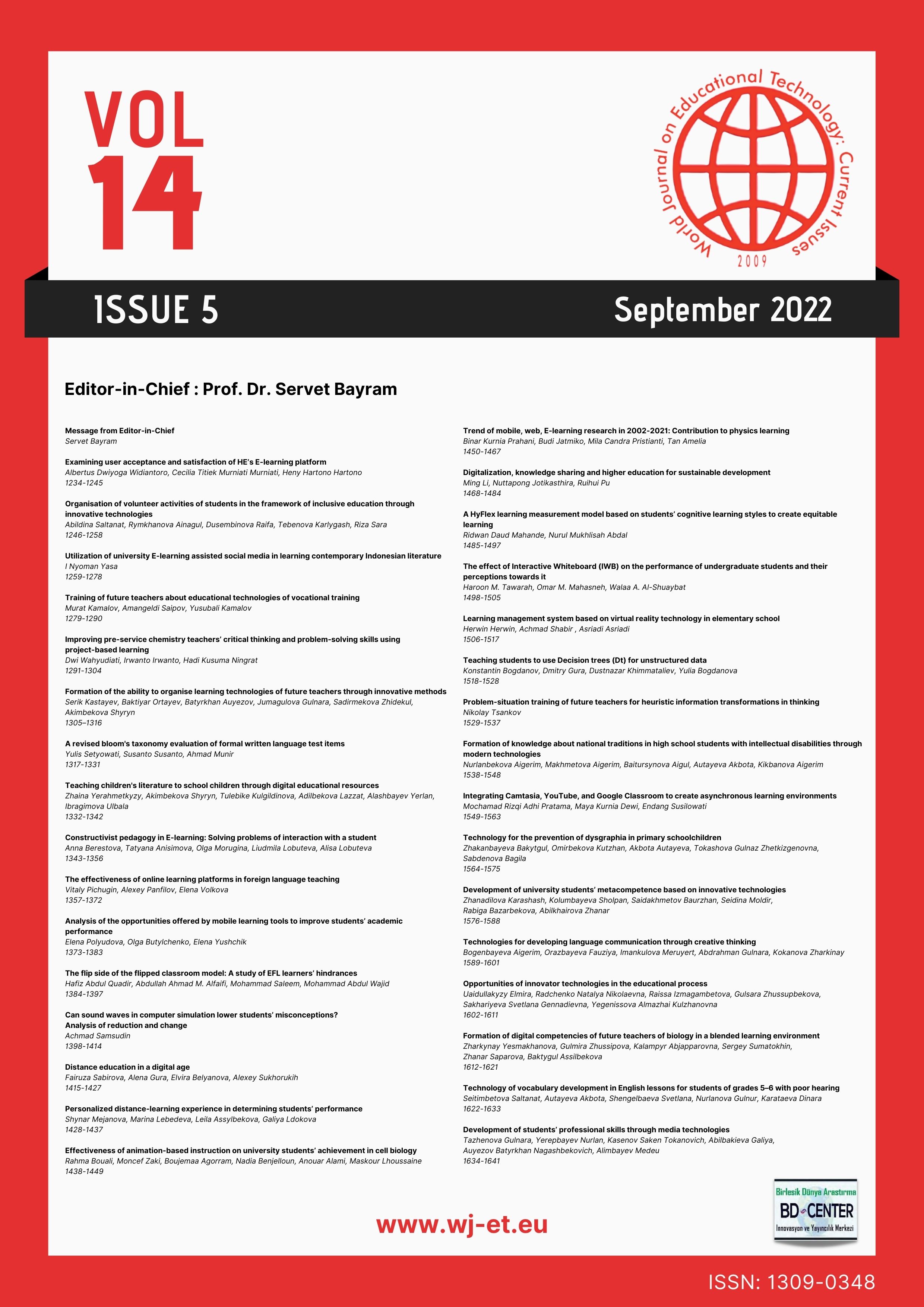The flip side of the flipped classroom model: A study of EFL learners’ hindrances
Main Article Content
Abstract
Flipped Classroom Model is reported in research studies to bring in numerous benefits to learners in comparison to conventional, teacher-dominated language pedagogy. However, some researchers believe that most of the FCM success stories reported in research are anecdotal and based on hearsay. The present research study investigates the efficacy of FCM to teach English as a foreign language in the Saudi Arabian context. In a quasi-experimental study, a selected group of twenty students was taught through the conventional as well as FCM approaches. Marks obtained by the control and treatment group participants were compared and t-test was applied to mark the significance of difference, if any. The findings showed a significant difference (t = 3.889; significant at α =.001; df = 38, two-tailed test) between the marks of the same group of students taught using different approaches. Participants performed better under conventional lesson delivery approach. The study concludes that FCM as a teaching practice is unsuitable for some EFL learners, especially with teacher-intensive language elements, such as reading and writing.
Keywords: Flipped Classroom, language pedagogy, reading comprehension, teaching strategies, TEFL
Downloads
Article Details

This work is licensed under a Creative Commons Attribution 4.0 International License.
World Journal on Educational Technology: Current Issues is an Open Access Journal. The copyright holder is the author/s. Licensee Birlesik Dunya Yenilik Arastirma ve Yayincilik Merkezi, North Nicosia, Cyprus. All articles can be downloaded free of charge. Articles published in the Journal are Open-Access articles distributed under CC-BY license [Attribution 4.0 International (CC BY 4.0)].
Birlesik Dunya Yenilik Arastirma ve Yayincilik Merkezi (BD-Center)is a gold open-access publisher. At the point of publication, all articles from our portfolio of journals are immediately and permanently accessible online free of charge. BD-Center articles are published under the CC-BY license [Attribution 4.0 International (CC BY 4.0)], which permits unrestricted use, distribution, and reproduction in any medium, provided the original authors and the source are credited.
